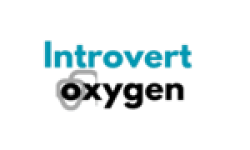Let’s start with a simple idea—the balloon theory. Imagine your energy at the start of the day is like a fully inflated balloon. Every interaction, task, or interruption pokes a tiny hole in that balloon.
For Introverts, maintaining productivity is about managing those energy leaks so your balloon doesn’t deflate before the day is done.
Here are 7 strategies tailored for introverts to boost productivity and keep your balloon floating high:
1. Push to Paper
Your mind can get overwhelmed when juggling tasks, so write them down.
Here’s a simple framework to organize them into four categories:
- A: Urgent and Important (Do it now!)
- B: Important but Not Urgent (Plan it for later.)
- C: Urgent but Not Important (Delegate it.)
- D: Not Urgent and Not Important (Drop it.)
Imagine it’s Monday morning, and you’re feeling swamped. You’ve got an overdue report, emails piling up, a meeting to prepare for, and a new show tempting you to procrastinate. Categorizing these:
- A: Finish the overdue report (it’s both urgent and important).
- B: Prepare for the meeting happening next week (important but not urgent).
- C: Reply to emails that don’t need immediate attention (urgent but not important).
- D: Watching the new show right now (neither urgent nor important).
By categorizing tasks, you’ll focus on what truly matters while letting go of what doesn’t. This simple clarity can prevent overwhelm and keep your day on track.
2. Warren Buffett’s 5/25 Rule
Warren Buffett once shared a productivity hack with his pilot, Mike Flint. He asked him to list his top 25 career goals.
Buffett then told him to circle the top 5 and set them as his focus. The twist? He advised Flint to avoid the other 20 goals completely, labeling them distractions that could derail his progress.
Each day, write down 5 tasks you want to accomplish. Now, circle the top 3,these become your primary focus.
For example, if your 5 tasks include finishing a proposal, brainstorming ideas for a project, cleaning your workspace, replying to emails, and scheduling social media posts, you might prioritize the proposal, brainstorming, and scheduling.
Stick with these top 3 tasks until they’re done. This focused approach, practiced daily, can drive long-term progress, just like Buffett’s investment philosophy.
3. Always Think About Your Future Self
When you’re doing a task, ask yourself two questions:
- What would 8-year-old me think about this?
- What will an 80-year-old me think about this?
For example, imagine you’re deciding whether to spend your evening working on a passion project or scrolling through your phone. Your 8-year-old self might think, “Wow, I always wanted to create something like this!”
Meanwhile, your 80-year-old self could look back and feel proud of the effort you invested in something meaningful. Conversely, wasting hours on your phone might leave your future self feeling regretful.
Or Let’s say you’re creating a photo book of family memories. Eight-year-old you might find it exciting to relive those moments, and 80-year-old you will cherish having something tangible to pass on.
Keep this perspective in mind to stay motivated and make choices that align with your long-term happiness.
4. Theme Your Days
Some of the most successful people organize their week with theme days.
For example, Jack Dorsey, the co-founder of Twitter, dedicates Mondays to management, Tuesdays to product, and so on. This eliminates decision fatigue and helps you focus deeply on one area at a time.
Think about how writers like Ernest Hemingway themed their mornings for writing and reserved afternoons for relaxation or reading. Similarly, Elon Musk dedicates specific days to Tesla and others to SpaceX.
Assign themes to your days. For instance:
- Monday: Planning and meetings—start the week strong.
- Tuesday: Deep work on creative projects—focus without interruptions.
- Wednesday: Learning and professional development—read or take a course.
- Thursday: Admin tasks and follow-ups—clear your to-do list.
- Friday: Reflection and planning for next week—review wins and set goals.
This structure creates rhythm and reduces the mental energy spent deciding what to do next.
5. Avoid Attention-Switching Costs
When you jump from one task to another, your brain struggles to refocus. Research shows it can take up to 23 minutes to fully regain concentration after an interruption.
Imagine you’re working on a budget report. Midway through, you get a notification about a social media comment. You reply, then return to the report—but your mind is still thinking about that comment.
Later, you get an email and switch tasks again. By the end of the day, your report is unfinished, and your energy is drained.
6. “Who, Not How”
Dan Sullivan, in his book Who Not How, explains that instead of asking “How do I do this task?” ask, “Who can help me with this?”
Imagine you’re launching a blog. Instead of spending hours figuring out web design, you could hire a freelance designer to handle it. This frees up your time to focus on writing great content.
Similarly, if you’re organizing an event, instead of trying to do everything yourself, delegate tasks like catering or invitations to someone else.
For introverts, delegating might feel uncomfortable at first, but it’s a powerful way to focus on tasks that align with your strengths and avoid burnout.
7. Reflect and Recharge
Finally, productivity isn’t just about doing more; it’s about doing what matters while protecting your energy. Schedule daily reflection time to review your wins, assess what didn’t work, and recharge for the next day.
At the end of each day, spend 10 minutes journaling. Write down three things you accomplished, one thing you’re grateful for, and one area to improve. Over time, this habit will help you stay focused and aligned with your goals.









